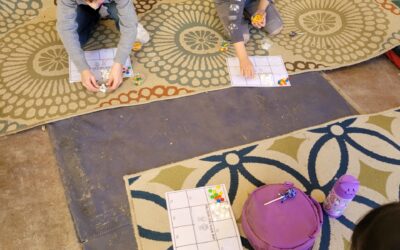April, 2022. The Iowa Assessments went smoothly and the results are both rewarding and informative. All students but one very recent student took the tests, 45 in all. Thirty-four students took the tests last year. This gives us and them a snapshot of their progress; we as teachers can reinforce progress and address apparent problems by looking at past-to-new year changes.
The tests cover wide areas – reading, math, social studies, science – and in depth in some areas, such as in reading, where the older students are tested in reading per se, written expression, conventions of writing, and vocabulary. In math, there is a separate part on computation that’s not folded into the final score (complete composite); it helps teachers assess student needs and teaching effectiveness.
Of course, the Iowa Assessments don’t test many areas of student performance or of our curriculum, or of social development. There are no tests for languages, a major focus for us, nor for music, art, physical education, and specialty courses such as world culture, sign language, or ethics. We have more informal evaluations for these other courses, and we assure that we look at these evaluations seriously. The Iowa Assessments give us information that is both narrower and broader (basic capabilities). We’ll continue to use them appropriately.
We use the scores to help individual students progress and to find possible improvements in our teaching. We do not rank students against each other at any point.
We may start with a summary of what the scores are and what they tell us is. The section following this delves into trends across test areas, across years, and by subjects that we teach.
For each part of the tests your student gets a set of scores; let’s go through them. The visual presentation in the NPR bar graph is notable. The length of each bar is a positive measure of performance. It’s a plot of the national percentile rank – how high your student’s score is relative to all students in the nation taking the test. A percentile rank of 77 in one test area means that your student scored above 77% of all students in that test area. It’s presented on a background of three vertical lines that show where national results lie for the first, second, and third quartiles lie – that is, ¼ of all students scored in the range from the 1st to the 25th percentile , ½ of all students scored in the range for the 1st to the 50th percentile, ¾ of all students scored in the range from the 1st to the 75th percentile.
The section on Test Scores gives more detailed information. One score that’s a bit arcane: The SS or scaled score is a measure of performance relative to the highest possible (999) that would be shown by persons at the very highest level of education at advanced levels (postgraduate). So, the SS will be “low” for young students but it may be very high relative to other students of that age group. The GE or grade equivalent is clear: at what level in all schools nationally taking the test is your student performing. Your 4th-grader may have a GE of 6.7 in math, equivalent to the average student in grade 6.7 nationally – that is, 7/10 of the way through grade 6. The NS or national stanine is another way of ranking students by percentile. It is less intuitive than the raw percentile score and perhaps adds little information. The NPR or national percentile rank is just the numerical value that holds the identical information to the bar graph.
It is notable that the two subject tests for older students, social studies and science, are tied to specific content – what the average student in the nation is exposed to. We do not “teach to the test,” and content in our courses varies year by year, so our students “miss” some test content in any year… but they perform admirably on the Iowa Assessments and they get a broader and deeper education in both of these subjects over the years.
You and we can look at the scores two ways:
— “horizontally” (at least in Vince’s spreadsheet), for an individual student, across the test areas.
First, Where are your student’s strengths and weaknesses; weaknesses are mostly relative to other areas for the student? A student may be high in the math score and not as high in social studies, but still very good. Most students, here and anywhere else, show much variability in talent and performance across different areas. It’s normal. Notable variations point us as teachers to areas where we might help students gain ground.
Second, How did your student progress from the 2021 test to the 2022 test? Vince extracted the results from the 2021 tests and calculated the numerical change. (Dear parents: you can ask us for these between-year comparisons for your child; you might send an email.)There are two categories of change that should be viewed differently. We’ll go through the different types of scores in the next paragraph, but it’s good to consider two kinds of changes in scores now:
Changes in percentile scores, such in reading: Even an unchanged score indicated student progress, since there is a higher grade equivalent associated with a gain in chronological age. Most changes in percentile scores are modest. We pay attention to major changes, up or down, particularly if a group of students shows such changes in the same direction (this did not happen). Some percentiles are almost impossible to change, such as high 90s; there’s little or no room to improve.
Changes in grade equivalent. With basic maturation of one year and steady performance in an typical school, one expects a gain of one GE per year. In the LCA, the average gain in grade equivalent exceeds this. Gains below one year are points for discussion with the family, which we are pleased to undertake.
— “vertically.” in one test area, for all students in one grade or for all students in the school. These measures tell us much about our teaching effectiveness across all students. In Reading Total and the associated Grade Equivalent we have computed the average of both measures. We have done this for individual grades (K, 1, 2…) and for the school as a whole. We have these values for last year, also, so that we have a measure of our teaching effectiveness by grade and for the school as a whole.


